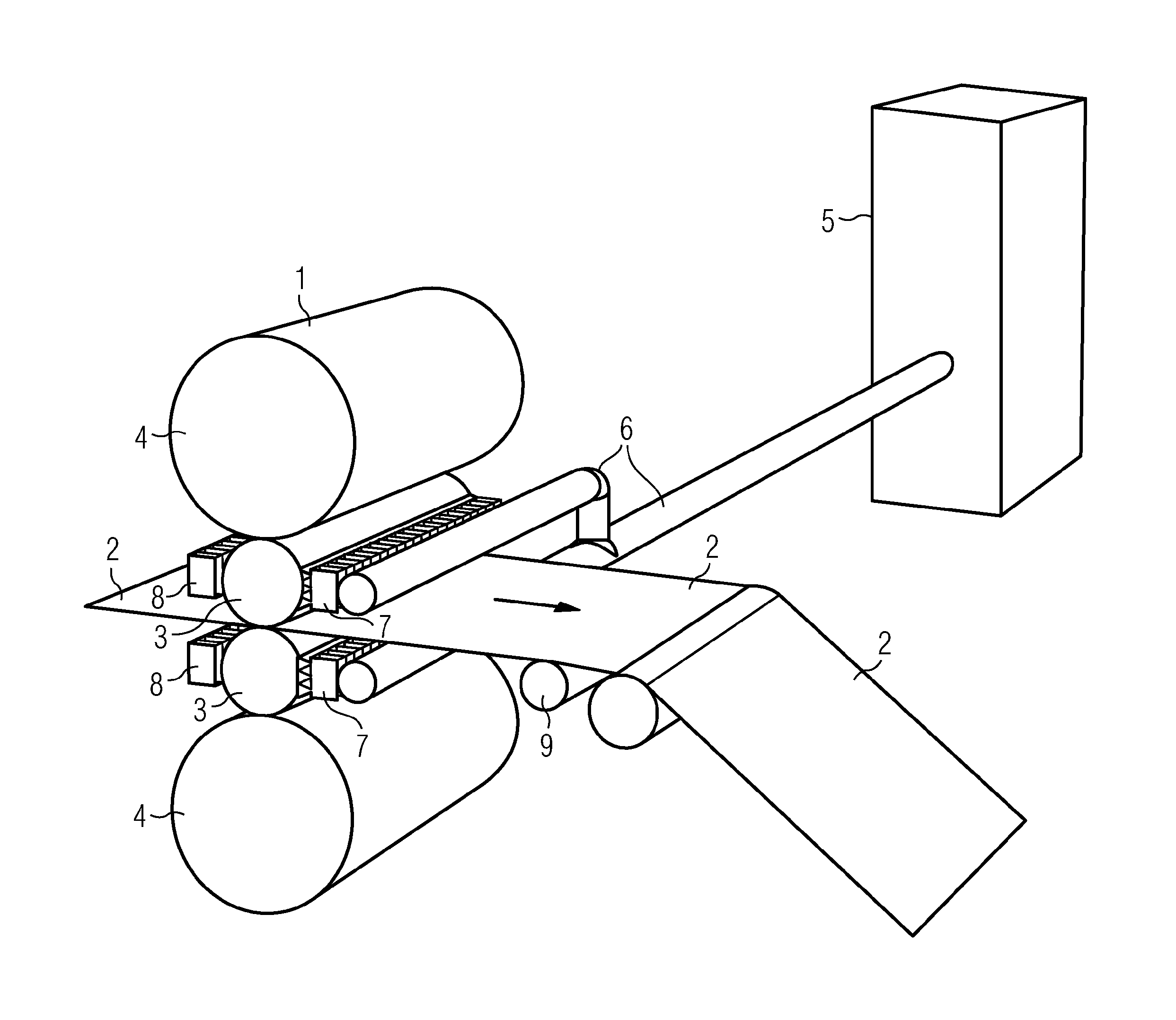Rolling mill temperature control
a technology of rolling mills and temperature control, which is applied in the direction of rolling mill control devices, metal rolling, work treatment devices, etc., can solve the problems of spoiling the appearance of the rolling process, difficult to ensure, and large heat generated by the rolling process
- Summary
- Abstract
- Description
- Claims
- Application Information
AI Technical Summary
Benefits of technology
Problems solved by technology
Method used
Image
Examples
Embodiment Construction
In the context of this specification, the term cryogen refers to a substance which is normally gaseous at room temperature but which is maintained in liquid state by suitable control of temperature and pressure and which is used as a coolant. Related terms such as cryogenic should be construed accordingly.
Cryogen includes, but is not limited to nitrogen, carbon dioxide, argon and oxygen.
Embodiments offer a new improved cooling and flatness control technology to be conceived with the following features:Banks of cryogenic gas or liquid applicators apply cooling to either or both sides of the mill rollsThese applicators are divided into individually controllable zones which can be controlled to give a varying cooling effect across the width of the rollAdditionally, one or more full width roll heating devices are used in conjunction with the roll coolant applicators.The roll heating devices are split into a number of individually controllable zones across the width of the roll. The numb...
PUM
| Property | Measurement | Unit |
|---|---|---|
| Pressure | aaaaa | aaaaa |
| Size | aaaaa | aaaaa |
| Width | aaaaa | aaaaa |
Abstract
Description
Claims
Application Information
 Login to View More
Login to View More - R&D
- Intellectual Property
- Life Sciences
- Materials
- Tech Scout
- Unparalleled Data Quality
- Higher Quality Content
- 60% Fewer Hallucinations
Browse by: Latest US Patents, China's latest patents, Technical Efficacy Thesaurus, Application Domain, Technology Topic, Popular Technical Reports.
© 2025 PatSnap. All rights reserved.Legal|Privacy policy|Modern Slavery Act Transparency Statement|Sitemap|About US| Contact US: help@patsnap.com



